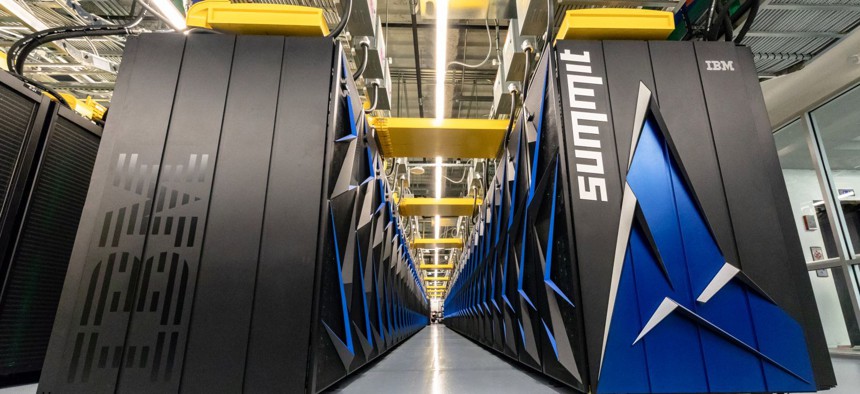
The Summit supercomputer has a peak speed of 200 petaflops, or 200,000 teraflops. Oak Ridge National Laboratory
US Retakes Supercomputing Crown, But China Has Far More of Them
Since 2002, China has gone from having none of the world's fastest supercomputers to having more than anyone else.
The US has regained its crown of owning the world’s fastest supercomputer—the machines that can achieve medical and scientific breakthroughs thanks to their enormous processing power—for the first time in six years. But China’s leaving the US in the dust when it comes to their respective shares of the world’s top supercomputers.
According to the latest Top 500 list, published Monday (June 25), China has 206 supercomputers and is leading the US by a record margin—82. The US has just 124 machines on the list, “a new low,” according to the statement accompanying the ranking. Just six months ago, China, with 202 of the top computers, was only ahead of the US by 59. Top 500 has been releasing the supercomputer ranking, compiled by prominent computer scientists, every six months since 1993.

China emerged from having not a single supercomputer on the list in 2002 to becoming a dominant power—it has had the top supercomputer on the Top 500 list for the past five years.
Still, the US regained the top performance position with Summit, an IBM-system-backed supercomputer now running at the US Department of Energy’s Oak Ridge National Laboratory. Summit’s calculation speed is 122.3 petaflops per second (Pflop/s)—the performance measurement used by Top 500. At its peak, Summit’s calculation speed can reach 200 Pflop/s, which is equivalent to around 6.3 billion people making a calculation at the same time for an entire year. According to the Top 500 list, taking computing capability into account puts the US ahead of China.
Summit surpasses China’s Sunway TaihuLight, which had been the world’s top supercomputer with a calculation speed of 93 Pflop/s since it started operating in June 2016.
Both the US and China are speeding up to the next stage of supercomputing—building a machine that can calculate at an exaflop, which is 1,000 petaflops. The US hopes to achieve the goal by 2021, while China is looking to beat the US a year ahead.



